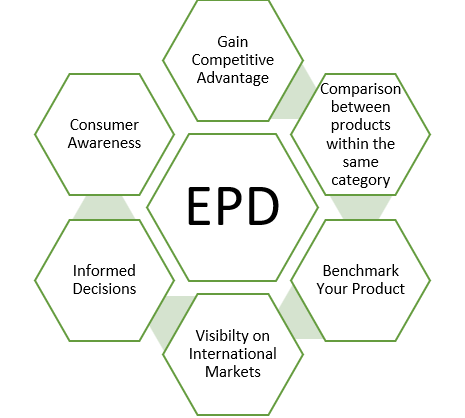What is an Environmental Product Declaration?
An EPD is a comprehensive document that transparently communicates how a product affects the environmental from cradle to grave.
It is a TYPE III ecolabel as per ISO 14025. It quantifies environmental information about a product’s life cycle, allowing comparisions between products that serve the same function.
EPDs are built upon the principles of Life Cycle Assessment (LCA).
Benefits of EPDs
EPDs serve several critical purposes:

What's inside an EPD?
An EPD report typically contains the following information:
- Product Details: Brand, product name, and category.
- Life Cycle Stages: Details about raw material extraction, manufacturing, transportation, use, and end-of-life considerations.
- Environmental Performance Calculations: Metrics related to energy use, greenhouse gas emissions, water consumption, and more.
- Sustainable Practices: Information on sustainable practices associated with the product.
- Summary Tables: These summarize environmental results across different markets.
Creating an EPD: The Framework
Creating an EPD involves several steps:
- Product Category Rules (PCRs): These are specific rules verified by an independent panel. They define how to assess a product category. PCRs ensure consistency in comparing similar products.
- Life Cycle Inventory (LCI): Gather data on the product’s life cycle. Reliable sources are crucial.
- Life Cycle Environmental Impact Analysis (LCIA): LCA experts analyze the data using software and assessment tools.
- Verification and Publication: The EPD undergoes verification reviews and is then ready for registration and publication.
Process of getting an EPD from us:
Search for PCR
Data Collection and LCA
Create EPD report
Review
Publish your EPD report
Get your EPD study done with us:

